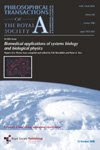Global change and terrestrial plant community dynamics
Is I believe, a most welcomed contribution to help adjust to climate change.
Read the full paper below (page foot)
- Contributed by Janet Franklin, February 2, 2016 (sent for review October 8, 2015; reviewed by Gregory P. Asner, Monica G. Turner, and Peter M. Vitousek)
Significance
Global terrestrial vegetation plays a critical role in biogeochemical cycles and provides important ecosystem services. Vegetation has been altered by anthropogenic global change drivers including land-use change, altered disturbance regimes, invasive species, and climate change, for decades to centuries, or in some cases millennia. Vegetation responses to land use and disturbance can be more immediate than to climate change and can be long lasting. The effect of global warming on water balance may have a stronger influence than the direct effects of temperature on vegetation. Models deployed at multiple ecological scales, populations, communities, and landscapes will be required to forecast vegetation responses and feedbacks to accelerated global change.
Abstract
Anthropogenic drivers of global change include rising atmospheric concentrations of carbon dioxide and other greenhouse gasses and resulting changes in the climate, as well as nitrogen deposition, biotic invasions, altered disturbance regimes, and land-use change. Predicting the effects of global change on terrestrial plant communities is crucial because of the ecosystem services vegetation provides, from climate regulation to forest products. In this paper, we present a framework for detecting vegetation changes and attributing them to global change drivers that incorporates multiple lines of evidence from spatially extensive monitoring networks, distributed experiments, remotely sensed data, and historical records. Based on a literature review, we summarize observed changes and then describe modeling tools that can forecast the impacts of multiple drivers on plant communities in an era of rapid change. Observed responses to changes in temperature, water, nutrients, land use, and disturbance show strong sensitivity of ecosystem productivity and plant population dynamics to water balance and long-lasting effects of disturbance on plant community dynamics. Persistent effects of land-use change and human-altered fire regimes on vegetation can overshadow or interact with climate change impacts. Models forecasting plant community responses to global change incorporate shifting ecological niches, population dynamics, species interactions, spatially explicit disturbance, ecosystem processes, and plant functional responses. Monitoring, experiments, and models evaluating multiple change drivers are needed to detect and predict vegetation changes in response to 21st century global change.
Global change and terrestrial plant community dynamics:
And why not join the community of readers of highly credible peer reviewed journal PNAS.(Proceedings of the American Academy of Science) Link to all subject matter.









No comments:
Post a Comment
Comments, questions and/or suggestions welcome. If I can be of further, more focused assistance, do not hesitate-ask. Comments are moderated to assist further enquiry and assistance.